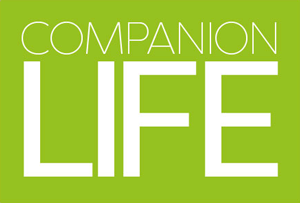Articles

Hitting the road with your dog squad
Taking a trip with your dog can turn an average journey into an epic road trip. But, when you've got more than one furry co-pilot, it's not just about cramming them all into the car.
You've got to make sure every one of them is safe, happy, and well looked after...
Top tips for pet owners at Easter
Easter can be a fun and exciting time for many when we can enjoy a nice break and some much-needed downtime with our pets.
Whether you’re enjoying nice long walks with your dog or tucking into your favourite chocolate egg, as a pet owner it’s important to remember the hazards...
Grooming tips for dog owners
Grooming your dog is a key part of responsible dog ownership. Whether you do it yourself or visit a professional groomer, it’s important to help keep their coat healthy and shiny.
Grooming your dog helps to prevent their coat from getting matted, as well s removing dead hair, dirt and...
Top tips for winter walks with your dog
Winter walks are a great way for them to experience the smells and sights of the season, as well as keeping their joints mobile.
Some dogs, such as smaller breeds and senior pets, are more vulnerable to cold weather and it is important to keep an extra eye on them.
Wrap...
Top tips for puppy training
Puppy training can be extremely beneficial if started as soon as you bring them home. It not only helps to introduce good behaviour, but also allows you to spend quality time with your new pet.
Most dogs will love learning new tricks as they get lots of praise and attention. ...
Caring for your horse in winter
Winter months can be lots of fun for everyone, but it’s important to provide the appropriate care for your horse and be prepared for any hazards that the season might bring.
With cold weather and dark nights, it’s important to ensure you provide the right winter care for horses. We...
Winter blues: Do pets get SAD?
In winter months, a lack of sunlight and spending more time indoors due to bad weather can result in something called Seasonal Affective Disorder (SAD).
Just like us, pets can be affected by the loss of sunlight in winter. In fact, a study by the PDSA found that one-third of...
Everything you need to know about dogs with blue eyes
Have you ever wondered why it’s so rare to see a dog with blue eyes? Only around 5% of dogs have blue eyes, with brown being the most common eye colour.
Although all dogs are beautiful, breeds with classic icy-blue eyes are particularly captivating. Blue eyes are striking, elegant, and expressive in a...
Top tips for autumn walks with your dog
Autumn is a great time to get outside to enjoy nature with your four-legged friend. While walking your dog, it’s important to be aware of how to keep them safe.
To help pet owners keep their dog's safe this autumn on walks, we share some top tips:
Change walking routine
With changes...
Advice from the expert: Caring for Fancy Mice
By Emma Purnell, RVN Cert.Nut
Fancy Mice are fascinating pets to own, both active and fun to watch, but have specific care requirements.
Fancy mice generally live up to 3 years which is a fairly short life span but still a significant commitment. They are very social animals and must live...
Why do pets moult?
Although moulting in pets is natural, the amount of fur coming off your pet can sometimes seem never-ending! And with the seasons about to change, you may see even more fur around the house.
Luckily, PDSA Vet Nurse Nina Downing is on hand to explain why and when pets moult...
Top tips for puppy training
Puppy training can be extremely beneficial if started as soon as you bring them home. It not only helps to introduce good behaviour, but also allows you to spend quality time with your new pet.
Most dogs will love learning new tricks as they get lots of praise and attention. ...










